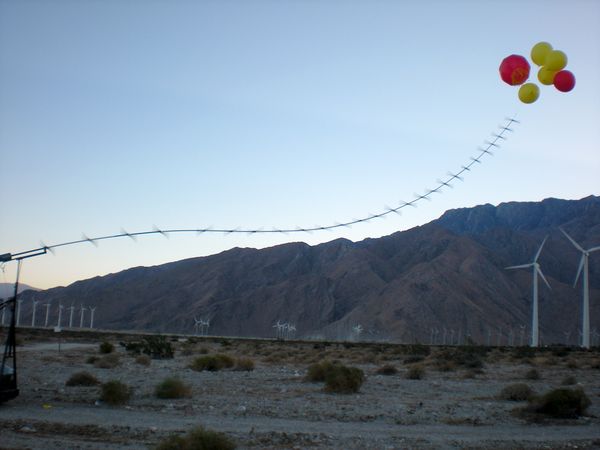
Photograph courtesy Makani Power
Like the wing of a propeller plane without a cockpit, a Makani Airborne Wind Turbine stirs the air in a California field where it is being tested to capture high-altitude wind power.
Anyone who has climbed a mountain, a tower, or even a tall tree knows that winds get stronger at greater heights. There's less drag resistance from objects on the ground. That's why wind energy prospectors typically weld their expensive turbines to high towers, because the most important factor in power production is how fast the wind blows past the blades.
But what if turbines could reel in the power whirling above the reach of those tall towers?
Airborne wind energy pioneers, from North America to Italy and Australia, aim to find out. The technology is still in its infancy, although Makani's system—pictured above—has received notable backing from Google's philanthropic arm and the U.S. government. The concept also gained support in a new study published September 9 in the journal Nature Climate Change, which focused on the steady, fast high-altitude currents, and concluded that there's enough power in Earth's winds to be a primary source of near-zero-emission electric power as the global economy continues to grow through the 21st century.
The study found that wind turbines placed on Earth's surface could extract kinetic energy of at least 400 terawatts (trillion watts), while high-altitude wind power could extract more than 1,800 terawatts. The latter is about 100 times greater than the world's current power demand, the authors noted.
"The upshot is that airborne wind starts to look a lot like solar power," said study co-author Ken Caldeira, a senior climate researcher at Stanford University's Carnegie Institution for Science. "It's a resource that is large relative to human demand, and harvesting it has to do with economics and engineering, not fundamental limitations of the resource." (Of course, wind power ultimately can be called a form of solar power, too, because it's uneven heating by the sun that drives the winds.)
Caldeira and his colleagues, however, had the luxury in their theoretical study of not worrying about the practical challenges of deploying airborne wind turbines. Research and development being done by Makani Power and others is aimed at developing a cost-effective system to bring that high-flying energy down to Earth.







No comments:
Post a Comment